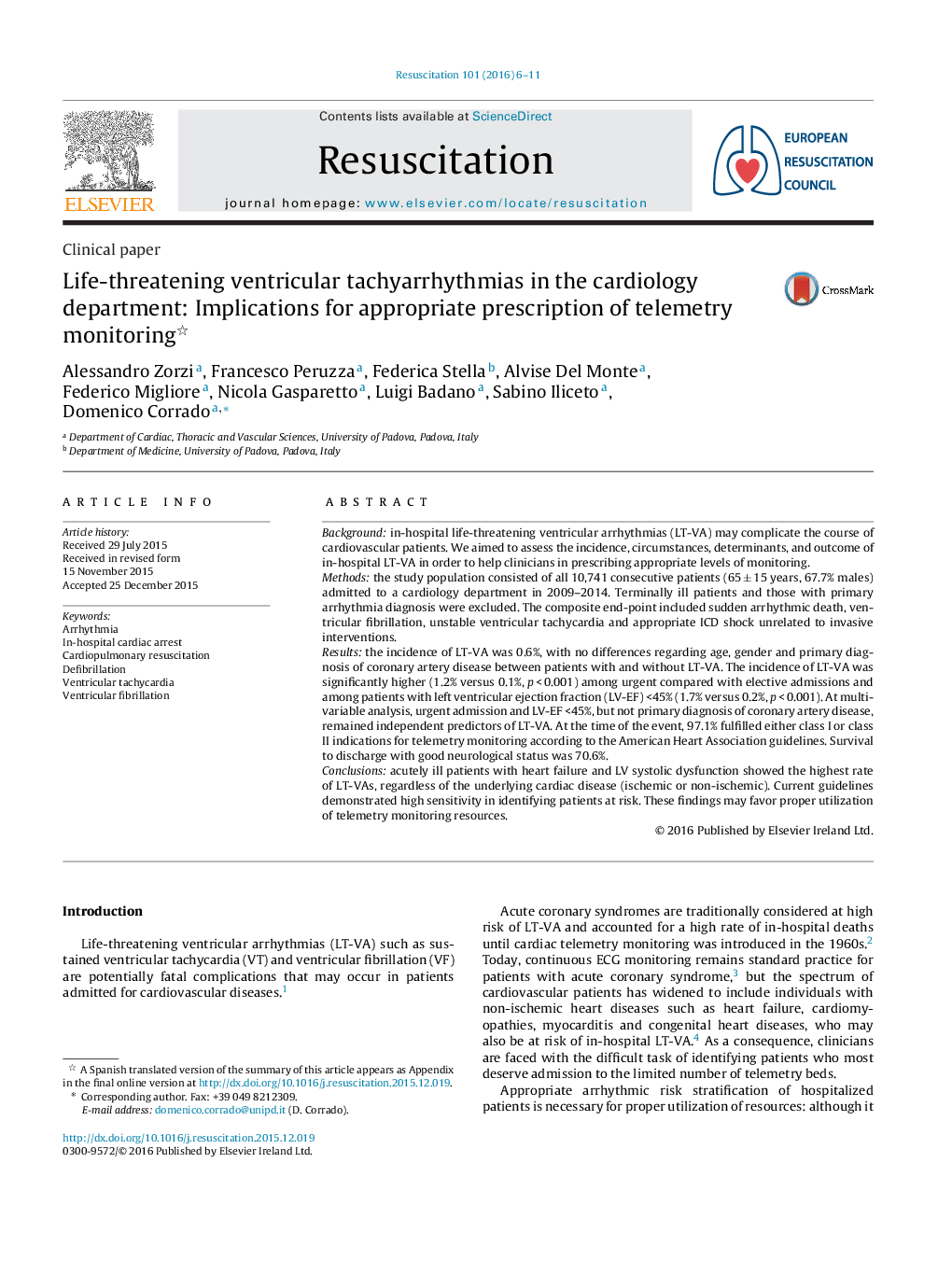| کد مقاله | کد نشریه | سال انتشار | مقاله انگلیسی | نسخه تمام متن |
|---|---|---|---|---|
| 5997596 | 1578983 | 2016 | 6 صفحه PDF | دانلود رایگان |
Backgroundin-hospital life-threatening ventricular arrhythmias (LT-VA) may complicate the course of cardiovascular patients. We aimed to assess the incidence, circumstances, determinants, and outcome of in-hospital LT-VA in order to help clinicians in prescribing appropriate levels of monitoring.Methodsthe study population consisted of all 10,741 consecutive patients (65 ± 15 years, 67.7% males) admitted to a cardiology department in 2009-2014. Terminally ill patients and those with primary arrhythmia diagnosis were excluded. The composite end-point included sudden arrhythmic death, ventricular fibrillation, unstable ventricular tachycardia and appropriate ICD shock unrelated to invasive interventions.Resultsthe incidence of LT-VA was 0.6%, with no differences regarding age, gender and primary diagnosis of coronary artery disease between patients with and without LT-VA. The incidence of LT-VA was significantly higher (1.2% versus 0.1%, p < 0.001) among urgent compared with elective admissions and among patients with left ventricular ejection fraction (LV-EF) <45% (1.7% versus 0.2%, p < 0.001). At multivariable analysis, urgent admission and LV-EF <45%, but not primary diagnosis of coronary artery disease, remained independent predictors of LT-VA. At the time of the event, 97.1% fulfilled either class I or class II indications for telemetry monitoring according to the American Heart Association guidelines. Survival to discharge with good neurological status was 70.6%.Conclusionsacutely ill patients with heart failure and LV systolic dysfunction showed the highest rate of LT-VAs, regardless of the underlying cardiac disease (ischemic or non-ischemic). Current guidelines demonstrated high sensitivity in identifying patients at risk. These findings may favor proper utilization of telemetry monitoring resources.
Journal: Resuscitation - Volume 101, April 2016, Pages 6-11
